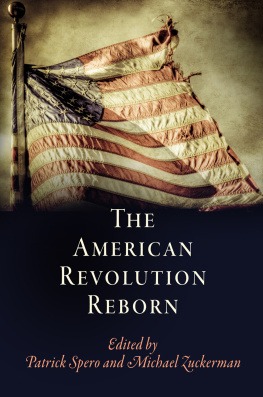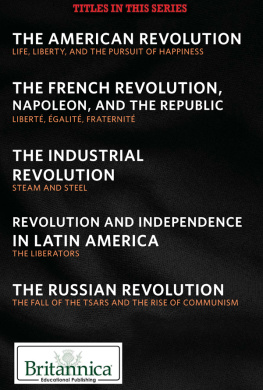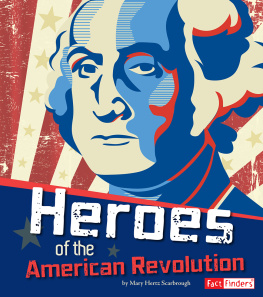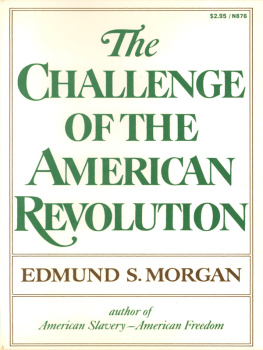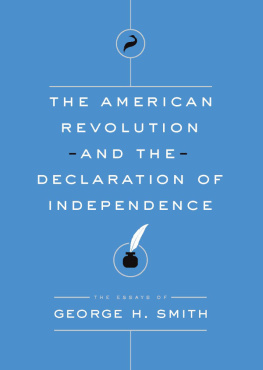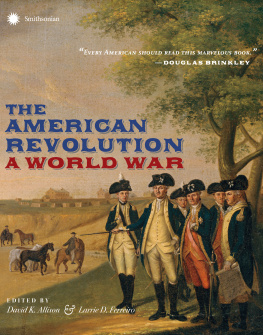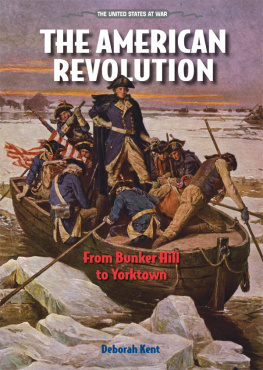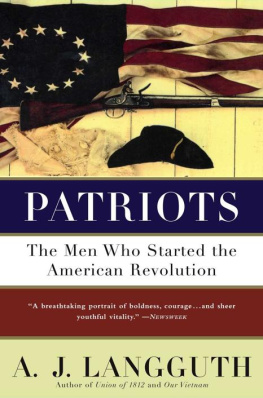
The American Revolution Reborn
THE AMERICAN REVOLUTION REBORN
Edited by
Patrick Spero
and
Michael Zuckerman
PENN
UNIVERSITY OF PENNSYLVANIA PRESS
PHILADELPHIA
Copyright 2016 University of Pennsylvania Press
All rights reserved. Except for brief quotations used for purposes of review or scholarly citation, none of this book may be reproduced in any form by any means without written permission from the publisher.
Published by
University of Pennsylvania Press
Philadelphia, Pennsylvania 19104-4112
www.upenn.edu/pennpress
Printed in the United States of America on acid-free paper
10 9 8 7 6 5 4 3 2 1
Library of Congress Cataloging-in-Publication Data
ISBN 978-0-8122-4846-3
To Frank Fox, who inspired us
And to the American Philosophical Society, Boston Beer, the David Library of the American Revolution, HISTORY, the Library Company of Philadelphia, the McNeil Center for Early American Studies, and the Museum of the American Revolution, who helped make it happen
CONTENTS

Patrick Spero
Michael A. McDonnell
Travis Glasson
Aaron Sullivan
Kimberly Nath
Denver Brunsman
Ned C. Landsman
Katherine Cart Engel
Bryan Rosenblithe
Mark Boonshoft
Zara Anishanslin
David C. Hsiung
Matthew Spooner
Aaron Spencer Fogleman
Edward G. Gray
David S. Shields
Michael Zuckerman
Introduction
Origins
PATRICK SPERO
The ground strewed with the dead and the dying; the impetuous charge; the steady and successful repulse; the loud call to repeated assault; the summoning of all that is manly to repeated resistance; a thousand bosoms freely and fearlessly bared in an instant to whatever of terror there may be in war and death
VETERANS! you are the remnant of many a well-fought field. You bring with you marks of honor from Trenton and Monmouth, from Yorktown, Camden, Bennington, and Saratoga. VETERANS OF HALF A CENTURY! when in your youthful days you put everything at hazard in your countrys cause
Daniel Webster, Bunker Hill Monument, dedication address, June 17, 1825
When Americans in the nineteenth century remembered the Revolutionary War, as Daniel Webster did at the Bunker Hill dedication in 1825, they painted images with their words of defiant patriots facing off with British redcoats. They told of valiant soldiers fighting for the cause of democracy and of a populace rallying around them and the cause for which they fought. The principle of free government adheres to the American soil, Webster declared in the same speech. It is bedded in it, immovable as its mountains. Such a rendering of the Revolution was intended to instill democratic ideals and nationalistic feeling in a generation born after the war. As Webster noted with no small a hint of concern, Those who established our liberty and our government are daily dropping from among us. The great trust now descends to new hands. The idealism imbedded in Websters speech represents the very first popular interpretation of the American Revolution. Its influence still lingers in the American psyche today.
But, as The American Revolution Reborn shows, the experience of living through the American Revolution, rather than its romantic memory, was a far more complicated affair than Websters glorified depiction. This perspective can get lost as time makes the American victory at Yorktown in 1781 appear a mere fait accompli and the eventual prosperity of the nation that the war secured an inevitable result of a democratic revolution. The historians in this volume avoid this trap. The authors themselves embody the promise of the present generation, and their work hints at a future of renewed interest in the struggle for independence. They recover the uncertainty, fears, and discord in American society during a war that did eventually succeed and give rise to a new nation. But that eventuality is of little concern to them. Rather, they want to treat the Revolution as a historic event divorced from the interpretative pressures the present can sometimes place on historians. For our authors, the American Revolution was a lived experience filled with many contingencies and alternative paths. As one of them asks, What did this divisive and bloody war time experience mean to its many participants?
Consider some of the things the authors of the following chapters observe. They present strong evidence to suggest that a majority of the American populace were neutrals. Indeed, a set of our authors challenge us to rethink loyalty and allegiance during the war. Seaports, they show, were torn apart by warring armies, with many residents simply swearing allegiance to whatever power prevailed at a given moment. Other urban denizens seized the opportunity British occupation presented to declare their continued loyalty to the British Crown. The American countryside was no different. Disillusioned with the tactics of both sides, many farmers simply tried to stay out of the fray. On the high seas, impressment, one of the reasons Thomas Jefferson cited in justifying American independence in the Declaration, was, in fact, a tool both sides used, and sometimes imprisoned sailors switched sides as a means to find their way back home.
Meanwhile, other contributors provide new insights on the way the war for American independence altered the status quo in many colonies turned states. War measures in the South, for instance, strengthened the institution of slavery, as patriots use of slave labor to serve their political and military ends also rechanneled the distribution of wealth and power in their favor. The production of saltpeter, an ingredient necessary for conducting war in the eighteenth century, spurred a race to manufacture it on the home front that challenged Americans knowledge of science and the environment.
Finally, other essayists take a more global perspective on the Revolution to demonstrate that the coming of the American Revolution and the war itself tested the limits of an expanding British Empire. The fracture of the British Atlantic community raised questions about the best ways to hold an empire together politically, while upsetting the social institutions that once bound colonists and Britons together.
While these perspectives aim to cast the American Revolution anew, they also aim to do something more. They mean to reinvigorate a field. Collectively, the essays reflect both the past successes of and current frustrations with a previous generation of scholars who once dominated the scholarly landscape. For the past several decades, scholarship on the Revolution has generally fallen into one of three competing schools. There is the neo-whig school that emphasizes the power of ideas as the catalyst for the Revolution. Then there is the neo-progressive school, which pays more attention to the economic discontent and social discord in the colonies that propelled common people to rebellion. And then there is the neo-imperial school, which focuses on the breakdown of imperial politics and the function (and dysfunction) of institutions of empire. These historiographical schools have expanded our understanding of the cause and course of the American Revolution, and they have all influenced the contributors to this volume, sometimes explicitly, more often implicitly. But none of our authors attempt to conform to one school or another. Rather, they seek to upset the patterns of historical inquiry that have defined scholarship for the past generation.
Our authors also disconnect their scholarly interpretations of the Revolution from the nation-building project to which it has so often been tied. Americans have always linked the American Revolution and the founding of the United States to the political efforts they undertake in the present, as Websters speech reminds us. The Revolution, in other words, has persisted in the present. Its principlesreal or imaginedhave animated our society. It has been alive in our popular imagination, in the best-seller lists, in dramatic miniseries, in the inaugural addresses of presidents, in the protests that have filled our streets and parks, and in the built environment of our oldest cities.
Next page
